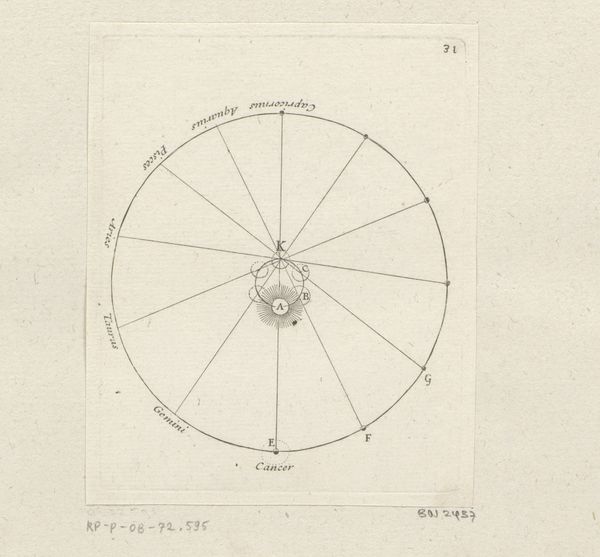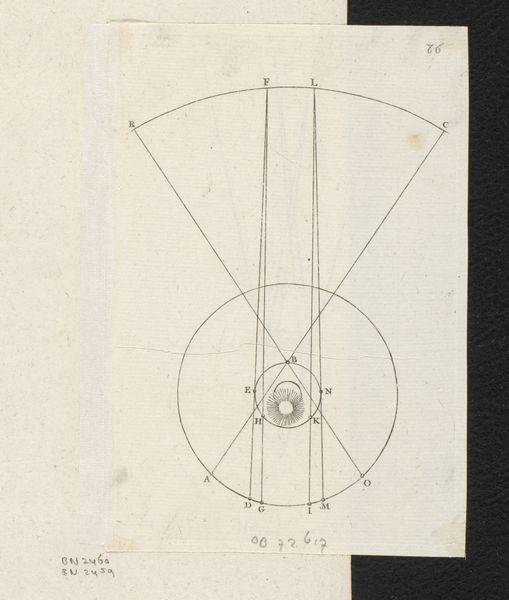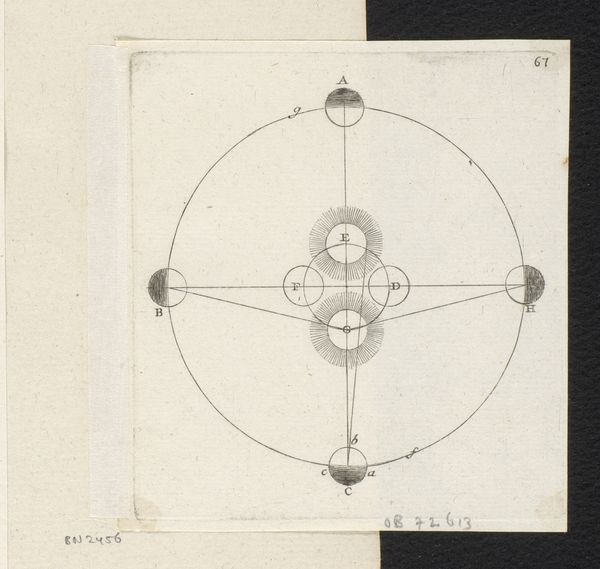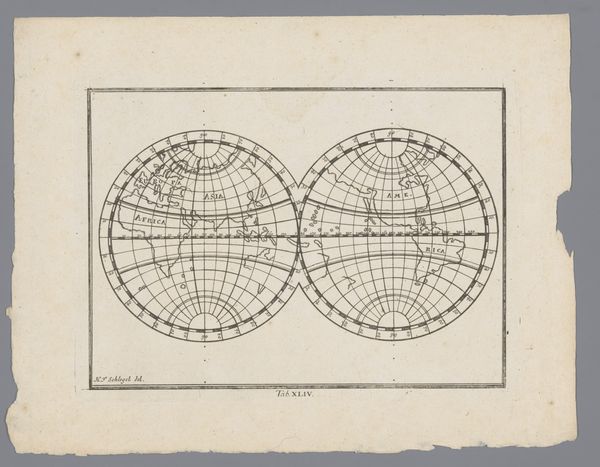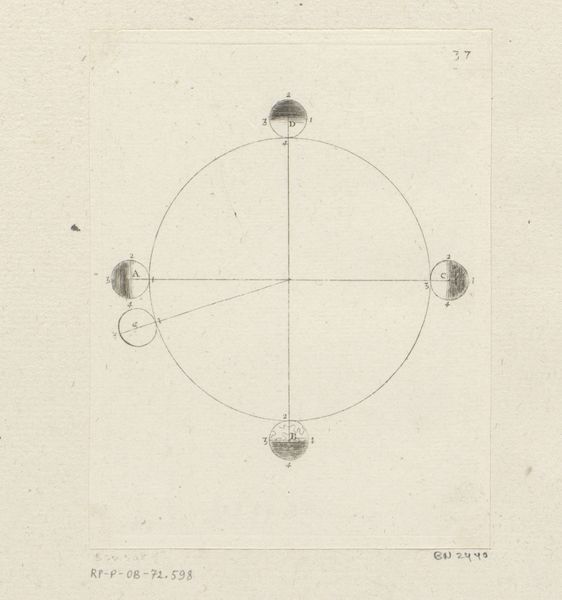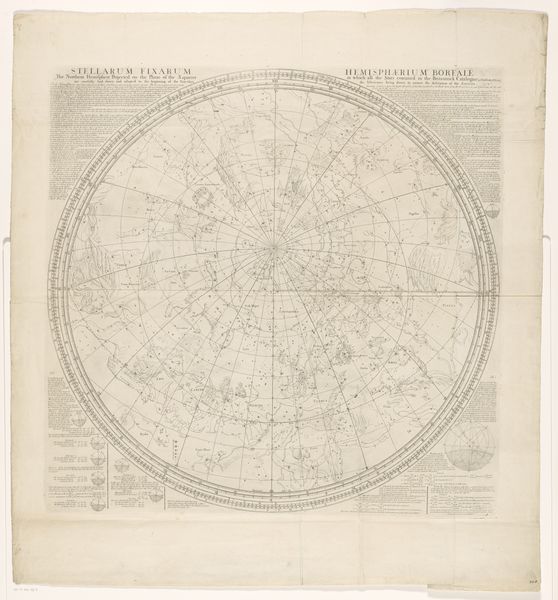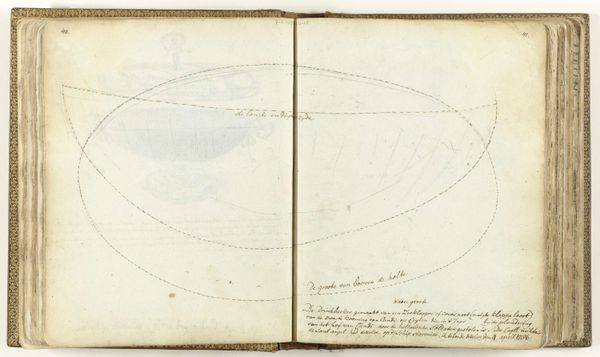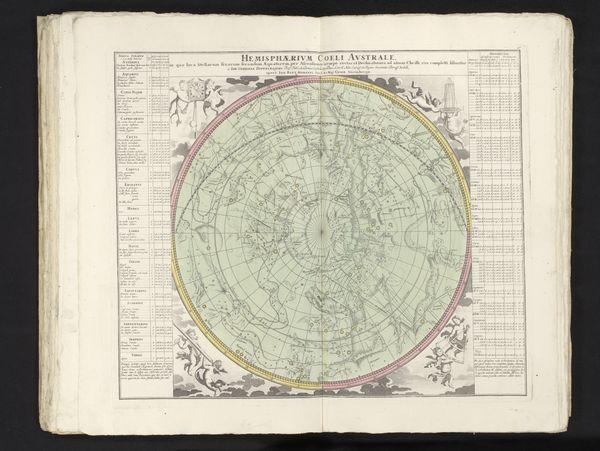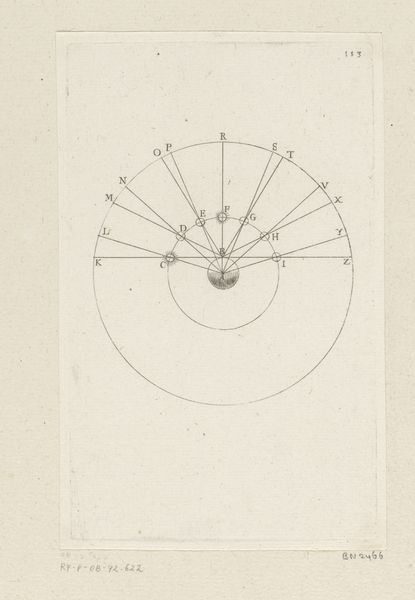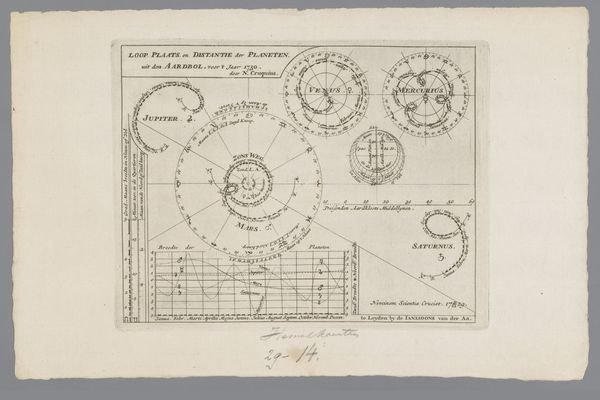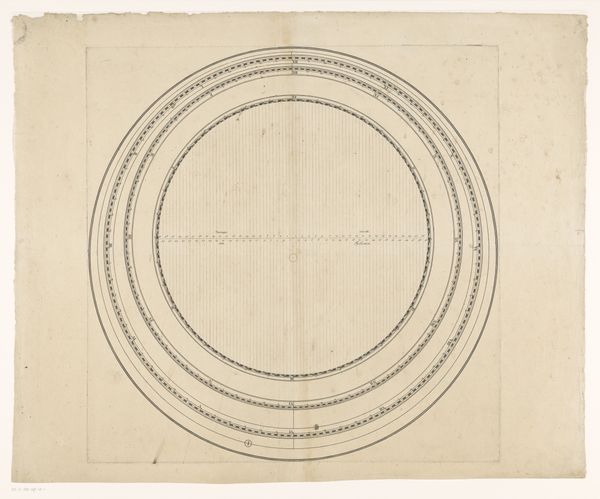
drawing, paper, graphite
#
drawing
#
paper
#
coloured pencil
#
geometric
#
graphite
#
academic-art
Dimensions: height 168 mm, width 124 mm
Copyright: Rijks Museum: Open Domain
Editor: This is “Schematische doorsnede van de zon,” or "Schematic cross-section of the sun," made between 1870 and 1872 by Albert Schutze using drawing, paper, graphite, and coloured pencil. I'm immediately struck by the mix of the scientific and artistic here. It's so precise, almost cold, but then there are these bursts of detail along the edges of the circle... almost like flares? How do you read this piece? Curator: Yes, those flares are key, aren't they? To me, this isn't just science, but wonder expressed through a scientific lens. Schutze’s precision isn’t cold; it’s reverent. Think about it: in the late 19th century, the sun was still, in many ways, a mystery. Representing it like this, so meticulously, becomes almost a devotional act. I see yearning to understand, not just catalog. What do *you* think? Editor: That's interesting. I was focused on the contrast, but maybe it's more about harmony. A devotional act, seen through science... it definitely makes you think about how we perceive the universe. Is there a cultural aspect I'm missing? Curator: Absolutely. The academic art style ties into the 19th-century obsession with categorizing and understanding the natural world. But look at those imperfections – those little flares aren't perfectly uniform, are they? Maybe Schutze is also hinting at the limitations of pure scientific representation. A whisper that some things can only be felt, not measured. What an ambitious pursuit. Editor: So, the "flaws" are the point? I love that. It moves it from a cold diagram into something really compelling. Curator: Precisely. It transforms the piece into a deeper meditation on knowledge, perception, and the beauty inherent in the yet unknown. Editor: I will never look at another scientific drawing in the same way again! Thank you.
Comments
No comments
Be the first to comment and join the conversation on the ultimate creative platform.
